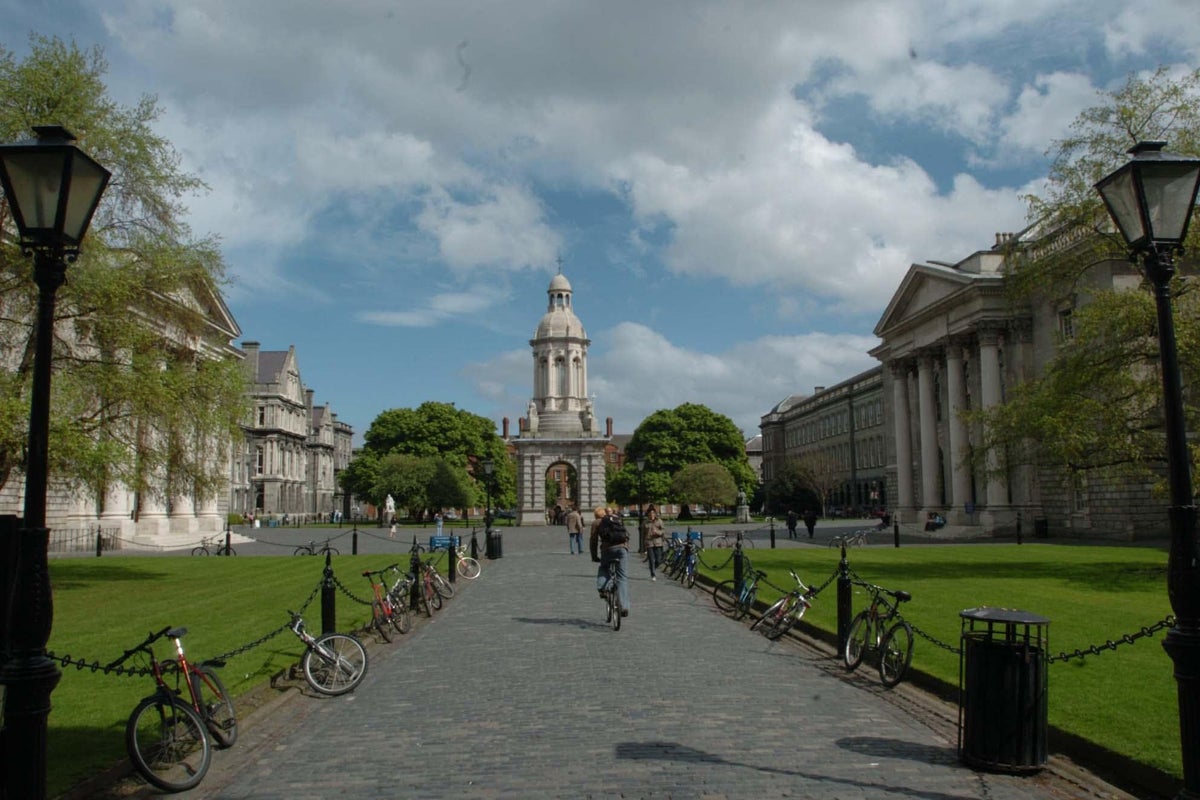
An internal group within an Irish university is examining its legacy issues – including what to do with 13 ancient skulls taken from an island over 100 years ago.
The Legacies Review Working Group, which met for the first time last week, is part of Trinity College Dublin’s formal process to review legacy issues since its foundation in 1592.
Following the death of George Floyd in Minneapolis in 2020, a wave of protests began in the USA and around the globe as part of a reckoning over racial injustice.
Through the Black Lives Matter movement, a focus was put on statues of figures with controversial pasts, which put governments, universities and institutions under pressure to consider how they are remembered.
The two first issues the working group will tackle are whether Trinity’s Berkeley Library should be renamed, and what should be done with human remains from Inishbofin that are now held by Trinity.
Trinity’s main library was named in 1978 after the renowned philosopher George Berkeley, who was a slave-owner.
“So I think for Berkeley, you get very polarised opinions on it,” Senior Dean at Trinity Eoin O’Sullivan, head of the working group, told the PA news agency.
“Some of the submissions say ‘the library is named after him, not because he was a slave owner, but because he was a brilliant philosopher’. So how do you separate out the two, and is it possible?
“How do you separate out the unsavoury parts of some of these characters’ histories versus their contributions to science, to philosophy, to whatever?”
“It is complicated,” he said.
This isn't uniquely an Irish or Trinity issue, it's a worldwide issue about how we deal with some of these legacies— Senior Dean at Trinity Eoin O'Sullivan
In relation to the stolen skulls, taken from a monastery on the island of Inishbofin by two Trinity-affiliated academics in 1890, Mr O’Sullivan said it was chosen as the first case because what happened is clear.
After sketching the skulls in the nook of St Colman’s monastery, considered sacred by the islanders, Alfred C Haddon and Andrew F Dixon took 13 human skulls in the middle of the night.
The diary entry also says that when asked by sailors to hand over the satchel, “Dixon would not give it up” and told the men it contained ‘poitin’ – a distilled Irish alcohol.
Prof O’Sullivan said: “We picked that one first because the provenance is very clear: we have his diary, we know he took those skulls without the consent of the islanders and bundled them into a satchel, and put them on the boat and back to Trinity with them.
“When we were down at Inishbofin two weeks ago, one of the islanders (asked us) did they take them because they wanted to sell them and no, they actually thought that this was good science at the time.
“This is a straightforward science [at the time], trying to identify characteristics of different peoples and one way you could do that was to identify and measuring different skull types.”
Because the skulls are estimated to be around 400 or 500 years old, under Irish law they could come under the remit of the National Museum of Ireland, which is represented on the working group along with students and academics.
“This isn’t uniquely an Irish or Trinity issue, it’s a worldwide issue about how we deal with some of these legacies,” Prof O’Sullivan said.
We as islanders we want them back and we want to bury them— Marie Coyne, Inishbofin Heritage Museum
The working group doesn’t have the authority to say what should be done in either case, but will outline the options for the Trinity provost and board to consider.
Marie Coyne, a genealogist who set up the Inishbofin Heritage Museum, said that islanders want the skulls returned and that the process has been too drawn out.
“We as islanders we want them back and we want to bury them,” she told PA.
“We don’t think what happened was right.
“If there was a priceless painting stolen, there would be every guard in the country looking for it, and they’re more sacred than any priceless painting.”
Two petitions asking for the skulls to be returned have been signed: one physical copy with up to 170 names from people on the island; and a second online petition with over 800 names gathered.
Ms Coyne said: “There seems to be a lot of hurdles over the last numbers of years.
“It’s coming to a head and we’d be interested to see what they do or decide.
“How long more can you drag it out? I think they could have been a bit more forthcoming.”
Mr O’Sullivan said: “[The working group] was something we devised with the Provost over the summer, and Linda (Doyle) was very clear, there’s a couple of key principles I want in this: I wanted to be evidence-based, I want it to be transparent, but I also want it to be open to the public.
“This isn’t just an internal ‘Trinners’ thing, we are funded by the state, we always have been, and so it’s not just our current students or alumni that should be involved in this but the wider public -Trinity is a public institution in the centre of Dublin.”
In the New Year, a call is to be issued for submissions from the public, staff and students, asking for other issues relating to Trinity’s history that should be examined in a similar way.
The Trinity Legacies Review Working Group is inviting evidence-based submissions from the public on both the Berkeley Library and the Inishbofin skulls.
Submissions on Inishbofin are being accepted until Wednesday, December 7 2022, and submissions on the Berkeley Library are being accepted until Tuesday January 31.







